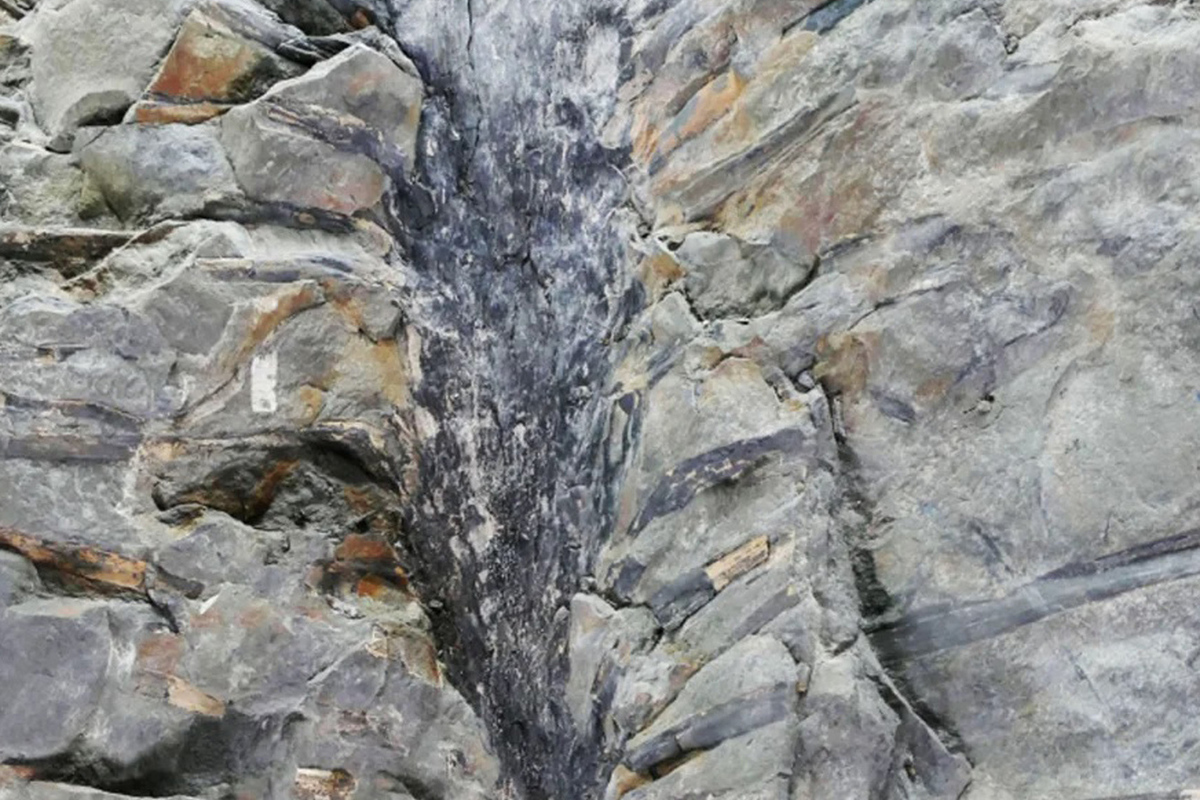The discovery of a rare ancient tree has baffled scientists
[ad_1]

Five fossils of trees buried alive by an earthquake 350 million years ago were found in a quarry in the Canadian province of New Brunswick, according to a study published in the journal Current Biology. The authors said these new and unusual fossil trees provide clues to a period of life on Earth about which we know little.
“These are time capsules,” said Robert Gastaldo, a paleontologist and sedimentologist who led the study, “literally little windows into the landscapes and ecosystems of deep time.”
Co-authors Olivia King and Matthew Stimson unearthed the first of the ancient trees in 2017 during field work at a quarry in New Brunswick. One of the specimens they discovered is one of the few instances in the entire plant fossil record, spanning more than 400 million years, where a tree’s branches and crown leaves are still attached to its trunk.
According to Robert Gastaldo, the most tree fossils ever found date back to the earliest forests on Earth. Their discovery helps fill in some missing pieces of the incomplete fossil record.
“There are only five or six trees that we can document, at least into the Paleozoic, that survive with their crowns intact,” notes Gastaldo, a geology professor at Colby College in Waterville, Maine.
He noted that most ancient tree specimens are relatively small and are often found as a fossilized trunk with a stump or root system attached. That his colleagues had found a preserved tree that could reach 15 feet in height at maturity with a crown 18 feet in diameter left the paleontologist “amazed.”
Researchers unearthed the first fossil tree about seven years ago, but it took several more years before four more specimens of the same plant were found in close proximity to each other. The newly identified species, dubbed “Sanfordiacaulis,” was named after Laurie Sanford, owner of the quarry where the trees were discovered.
According to the study, the forms that these previously unknown 350-million-year-old plants took are somewhat reminiscent of a modern fern or palm tree, despite the fact that these tree species did not appear until 300 million years later. But while the tops of ferns or palms as we know them boast a small number of leaves, the most complete specimen of the recently discovered fossil has more than 250 leaves preserved around the trunk, with each partially preserved leaf measuring about 1.7 meters in length.
The fossil was encased in a sandstone boulder about the size of a small car, according to Matthew Stimson, assistant curator of geology and paleontology at the New Brunswick Museum.
The unique fossilization of the tree cluster is likely related to a “catastrophic” earthquake-triggered landslide that occurred in an ancient rift lake, he said.
“These trees were alive when the earthquake happened. After that they were buried very quickly, very quickly at the bottom of the lake, and then the lake returned to normal,” Stimson said.
According to Peter Wilf, a professor of geosciences and paleobotanist at Pennsylvania State University who was not involved in the study, the discovery of entire fossil trees is rare and much less common than the discovery of an entire dinosaur. Wilf noted in an email that the “unusual” new fossil tree was a relic from a time period from which there are almost no tree fossils left.
“The new fossils are an important milestone in our understanding of how early forest structure evolved, ultimately leading to the complex architecture of tropical forests that support much of Earth’s living biodiversity,” Wilf added.
The dominance of Sanfordiacaulis was short-lived, the researchers say. “We won’t see this plant architecture again,” Stimson tells CNN. He noted that this plant grew in the early Carboniferous period, at the end of the Paleozoic era, when plants and animals diversified, starting their journey from water to land.
Much of evolution is experimental in nature, and success is often measured by a species’ versatility, or ability to adapt to many different places and conditions. The unusual array of tree fossils provides evidence of a “failed experiment in science and evolution,” Stimson added. “We’re really starting to paint a picture of what life was like 350 million years ago.”
Fossils like Sanfordiacaulis aren’t just useful for helping people understand how life changed in the past, they can help scientists figure out where life on our planet might be heading next.
The existence of this particular species suggests that trees from this period were beginning to occupy different ecological niches beyond what was previously understood, according to the researchers behind its discovery.
Robert Gastaldo sees this as an indication that plants, much like early invertebrates, were experimenting with how they adapted to their environment. The earthquake that likely petrified the trees also provides new geological evidence of what may have been happening in Earth’s systems at the same point in time.
“This is really the first evidence we have of a tree that would be between something that grows on the ground and something that would rise above the ground,” Gastaldo said. “What else was there?”
[ad_2]
Source link








